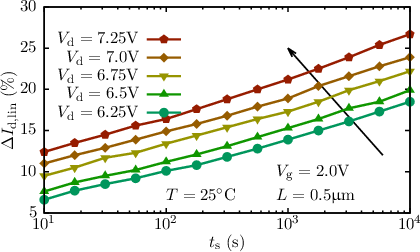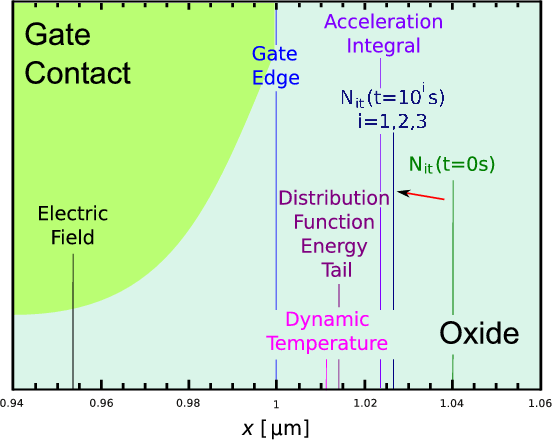7.2 Electric Field Dependence
Experimentally it was confirmed that hot-carrier degradation in MOSFETs is highly electric field
dependent (cf. Figure 7.3) [172, 164, 170], for both short- and long-channel devices. Thus the
influence of the electric field and channel length on HCD is uncorrelated. This is due to the constant
field scaling applied by the industry [173] and can be attributed to the fact that even a few
nanometers of silicon are sufficient for charge carriers to be accelerated or otherwise high drain
currents in scaled devices could not be sustained.
The significant lateral field dependence inspired the first lucky electron model [164], which assumed
that the lateral electric field is the driving force of hot-carrier degradation (field driven paradigm)
[164]. Systematic investigations based on Fowler-Nordheim [175] tunneling stress, hot substrate and
channel charge carriers revealed that the carrier energy rather than the electric field is the driving
force behind hot-carrier degradation (energy driven paradigm) [176, 177]. However, charge pumping
experiments revealed that neither the peak of the electric field nor the peak of average kinetic carrier
energy coincides with the experimentally found maximum of the created interface defect
density Nit [178] (cf. Figure 7.4). Thus, the information on the electric field and average
carrier energy is not enough to adequately evaluate the the hot-carrier induced Nit profile.

